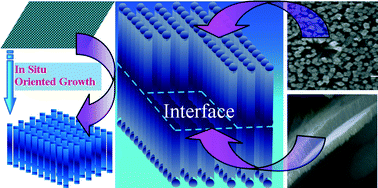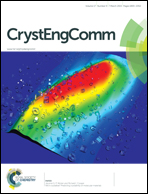Novel multi-layered SnO2 nanoarray: self-sustained hydrothermal synthesis, structure, morphology dependence and growth mechanism
Abstract
Novel multi-layered well-oriented SnO2 nanoarray assemblies have been successfully realized via a facile one-step self-sustained hydrothermal route. The morphology and phase structure of the multi-layered SnO2 nanorod arrays were examined using X-ray powder diffraction spectroscopy, scanning electron microscopy, transmission electron microscopy, high-resolution transmission electron microscopy and Raman scattering spectroscopy. The results demonstrate that the multi-layered SnO2 nanoarray structure consists of two storeys of rutile SnO2 nanorods oriented in opposite directions with a diameter of 25 nm and a length of 200–400 nm. The dependence of the morphological evolution process of the layered SnO2 nanorod arrays on the pH value, concentration, reaction temperature and reaction time were investigated. The results show that Sn(OH)62− ions play a key role in the formation of the multi-layered SnO2 nanorod array, and the pH value of the precursor solution is an important parameter for creating the multi-layered structure. A nonclassical crystallization process, i.e. an Ostwald ripening process followed by an in situ oriented growth mechanism, is proposed based on the detailed observations from the morphology dependent crystal evolution process.


 Please wait while we load your content...
Please wait while we load your content...